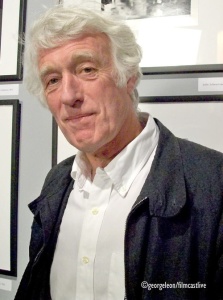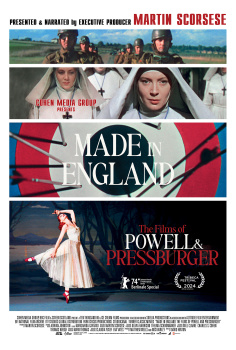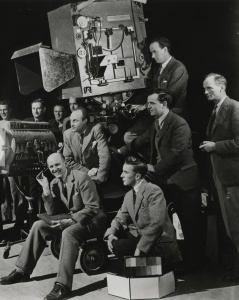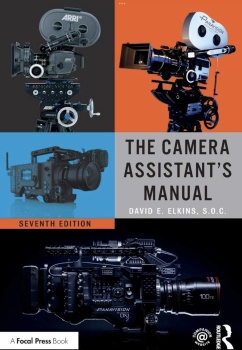This unit makes it as making as uncomplicated and ready for action as no other previous recorder, I could dream of, and delivering always (so far) plenty of excellent sonic results on a flip of ONE switch , storing the files on a small SD card. Later at the end of the working day, I simply download the files to my lap top compute.r The task of downloading is slightly time consuming at wrap time, but it is necessary to insure to myself and to the producer, the quality of the work performed.
BOUND FOR SOUND
By Giovanni Di Simone
Recording sound for film or video has been challenging specially in the last few years. Indeed, there have been a multitude of great technological advances in our field of sound recording for film and video whether on location or studio.This is the first installment of a new series of articles dedicated to the craft of audio recording and it is designed to help you understand or at least make you aware of the proper ways to record sound. In doing these articles, I will quote often from my experience as location sound mixer for over 25 years in USA as well as radio producer during my early days in Europe, as well as the experience of other award winning sound mixers friends of mine.
Before go any further, I would like to remind you of the old way of recording and archiving analog sound on tape, a technique that has been is almost been dismissed by our film industry, except for a very small elite of sound producers and engineers, that still are using 1/4 inch analog tape for recording and for music mastering . We will have the opportunity of expanding on these elite niche of professionals, later in subsequent articles.
The Tascam HS-82 Multitrack Recorder with 4 4Eleven A
wireless microphones, complete with an AFB and stereo wireless
send. Finally after 25 years, a miracle of lightness and common
sense and a full house sound card in a production bag.
Indeed, it has been already a few years since when we started recording sound on non-linear digital platforms, be on DVD RAM,DVD, and recently on HD card, CF flash or the minuscule SD card. I have to admit that these two new recording mediums are a blessing and a solution, after so many many years of the unfortunate and very unreliable hybrid format, DAT tape. The new formats allow for an increased storage capacity, ruggedness, even in tropical conditions and providing a definite and almost imperceptible digital sonic quality even on high resolution sampling rate. Most importantly they have been widely accepted by our industry.
For the on-location and studio work that most of us will have to perform, daily I shall say that the compactness and lightness of the new recording devices are a great advantage in comparison to the heavy and cumbersome recording equipment of the past. All these is great, in except for a couple drawbacks, High Power Consumption and Storage Capacity.
For any sound mixer, an eternal quest to keep his or her equipment running and recording on set has been access to a reliable source of either AC or DC power via different kinds of batteries. Such batteries are dependent on age, usage and charging conditions, making it challenging for the user to determine the usable amount of time before the batteries give up. I would recommend to carry many fresh batteries and always a back-up battery charger.
The remarkable touch screen of the Tascam HS-82 concentrates
all the most important functions for 8 channels
recording at a fingertip range. No more finger
contortions and no more dark or invisible screens.
Besides of the power dilemma, the sound mixer should ascertain the amount of storage space needed to complete the recording job, according to different variable sampling rates, number of recording channels used, style of the shoot. For example: for documentary work, I predominantly use two channels and for feature/narrative work , I use multiple tracks (up to 8) stored on multiple CF cards or SD cards,. To perform better and effectively at a sound recording job, I usually like to spend time researching and collecting data and regarding, the acoustics at the location, history of prior recordings, the features and the climatic conditions.at the same location Also, all the features and the handling of the equipment I have chosen as well the sanitary conditions and health requirements are taken into consideration, if I travel to a remote location.
A word of advice when doing research and consulting equipment instruction manuals, is to know beforehand how frustrating and poorly written they generally are. These manuals are commonly written by people who DO NOT use the device for a living and the the manuals are usually assembled in a counter intuitive manner, that make anyone scramble to find the right answer to a question at at that very moment. Usually, one ends up at the "ERROR MESSAGES PAGE" never to find that valuable piece of information needed , probably omitted due to incomplete or negligent technical knowledge of the writers. A solution to this lack of information is to visit and inquire with reputable distributors and retailers who have devoted so much of their time and resources to understand and sell such equipment and are able and willing to function as data banks on the use, history and frequent updates of their products. I could recommend at least 3 places in USA , each one with with its own specialties and particularities and I will supply you their links at the bottom of this article. I also call and consult with the customer service line of some of the reputable manufacturers, when I cannot find other reliable source of information.
I must admit I am a little skeptical of the many websites currently available on the web as I prefer direct human contact . I personally value my direct relationship with the manufacturer representative, because I can hold them accountable for the information received. What can I say, this is my way..!
I would like to advice you to spend your free time asking, calling, collecting specific information about the equipment you need to use, making sure you have all the necessary links of your recording chain assembled, all tested and working. For example, my living room floor is the the ground I practice this lovely and tedious operation, often a few days before I use the equipment I need.
Sound Devices 552 in its natural element.
Simplicity is a virtue
Although many portable sound recorders today allow the ability to record multi track channels, my preference in the last year has been to revert to the use of a 2 track stereo recorder with a 5 channel mixer built-in that I have nicknamed "ACTION RECORDER" finally available for our Film and Documentary industry. I am referring to the SOUND DEVICES 552, inappropriately marketed as a 5 channel portable mixer when in fact is a a 5 channel recorder/mixer with the added ability of recording a 2 track stereo mix..
This unit makes it as making as uncomplicated and ready for action as no other previous recorder, I could dream of, and delivering always (so far) plenty of excellent sonic results on a flip of ONE switch , storing the files on a small SD card. Later at the end of the working day, I simply download the files to my lap top compute.r The task of downloading is slightly time consuming at wrap time, but it is necessary to insure to myself and to the producer, the quality of the work performed.
This unit makes it as making as uncomplicated and ready for action as no other previous recorder, I could dream of, and delivering always (so far) plenty of excellent sonic results on a flip of ONE switch , storing the files on a small SD card. Later at the end of the working day, I simply download the files to my lap top compute.r The task of downloading is slightly time consuming at wrap time, but it is necessary to insure to myself and to the producer, the quality of the work performed.
Personally, I am not against MULTI TRACK RECORDERS although it has been a real hard and expensive struggle for manufacturers to come up with an accepted standard for the number of channels available and therefore very misleading to the user. I feel finally that any respectable MULTI TRACK RECORDER today ought to have at least 8 channels, plus 2 extra channels for the stereo mix (L&R) for the delivery of video dailies, a TC generator and the ability to accept External Time Code (EXT TC) as well, plus a reliable system of portable battery powering. In summary, I wish the day will come when we see the creation of a generation of Multi-track Recorders, awith uncomplicated, yet evolved user interfaces originated exclusively fand based on the tradition of location recording.
Here below find some of the companies I would like to recommend for you audio recording needs.





























































